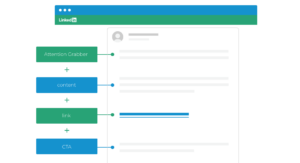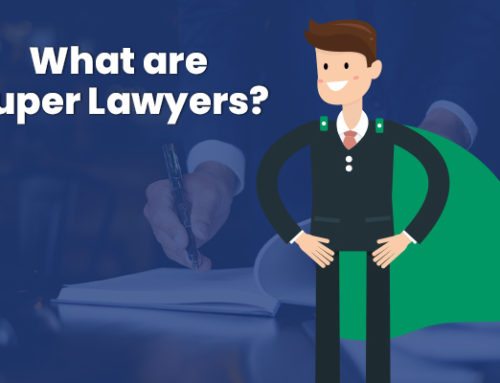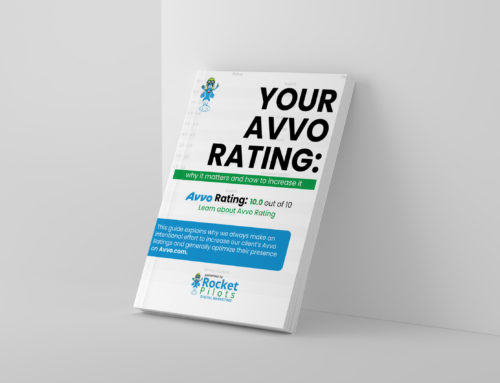You want to build your law practice. You know that social media can be a great way to connect with potential clients and build your brand. The problem is that Facebook, Twitter, and Instagram aren’t usually associated with social branding of the legal variety.
LinkedIn, however, is another matter. LinkedIn for lawyers gives you the opportunity to not just expand your brand, but tout your experience, interact with peers and potential clients alike, and establish your practice as a trusted purveyor of legal expertise.
Consider for a moment a well-appointed name brand hotel. If Twitter is the lobby bar and Facebook the casual restaurant where you come as you are, LinkedIn is the conference area concourse. It’s the place where people trade business cards and ideas.

LinkedIn is also where you might have a low-stakes exchange or conduct high-stakes negotiations. It’s grown-up social media for those interested in making professional inroads versus personal memories.
It’s also a platform where many users fail to take full advantage of its broad, brand building scope. LinkedIn is more than a site to house a resume and curate a contact list. It’s a platform designed for engagement. Not merely a place to keep track of other business associates, but to extol your knowledge and expertise and draw others into your sphere of influence.
The following guide shows you how to get started with LinkedIn and craft a strategy to increase engagement on the site. More than marketing, this will ensure you make the right contacts, join influential groups and associations, expand your presence, and broaden your firm’s reach.
LinkedIn For Lawyers: How to Build a Winning LinkedIn Profile
As with other social media sites, your LinkedIn profile is the window through which other users see you. Of course, it’s easier to see through a clear pane of glass than one that’s foggy or cluttered with debris.
Keep this in mind as you craft your initial presence on the site, with your profile and the building blocks that are your contacts, and groups and associations.
Building Your Profile
When creating your initial profile, keep in mind that social media, by its nature, is designed with short attention spans in mind. That’s not a knock by any means, just a statement of fact. Whether accessing it from a smartphone (which most will do), tablet, or laptop, people are in a hurry. They only have so much bandwidth in which to take notice of an interesting or relevant profile.
Translation: while the overall content of your profile is essential, what matters most is your photo, headline, and summary. These three sections equate to your first impression for anyone who visits your profile.
For starters, it helps to approach LinkedIn for lawyers, not as social media but as professional media. Understanding your target audience – who you want or need to appeal to – informs many of your profile choices.

Profile Picture
For your profile pictures, ask yourself what image you want to convey. The headshot is relatively straightforward. Professional and welcoming. Keep it simple. You’re not trying to impress anyone with your sense of style, just that you know how to present yourself professionally.
Banner Photo
The banner photo allows you a bit more flexibility in conveying a specific message or image that reinforces your practice. For example, if you have a specialization, you can incorporate an image that reflects your particular area of expertise. A banner that is eye-catching and relevant will force people to stop and take notice. An extra few seconds is enough time to make an impact.
The key is to reflect professionalism and sincerity about what you do (remember, although it’s social media, it’s not Facebook or Twitter). Above all else, ensure that the pictures are professionally taken and convey a certain polish. People may be in a hurry, but they notice when something is done well and when it’s not.
Headline
Your headline, just below your profile picture, is what people will notice next. If you change nothing, LinkedIn automatically formats this as your job title and the name of your law firm. You’re not, however, tied to that simple title.
Use your headline to indicate your exact expertise, and take advantage of search keywords. Include the specific terms an individual might type when searching for your services. You have 120 characters, or the length of this sentence, to indicate your fields of expertise to those seeking them out.
Summary
The summary serves as the final piece of your profile introduction. At its most basic, this is your flash presentation, the overview of what makes you a standout attorney. In a world that subscribes to sound-byte media, consider the summary your opportunity to quickly “make your case.”
That said, don’t rush the writing of your summary. Highlight your accomplishments, your value, what you’ll bring to the table that others can’t. Also, make it conversational. While you want your summary professional, avoid it coming across as canned or robotic.
Those seeking out an attorney – whether it be a peer or potential hire, or client – seek someone they can trust. Write a summary that is genuine and informative and communicates who you are and what you represent.
The first sentence is the most critical since LinkedIn will cut off everything after 200 words (less on a mobile device). Put the most pertinent information upfront to compel a viewer to click “See more…”
Experience, Education, Skills
For the remaining elements of your profile, specifically the experience, education, and skills sections, focus on keeping the information succinct and relevant to your current areas of expertise.
Much like a resume, you want to show upward mobility and command of your legal disciplines. But you want to do so without bogging down in too many details. A good LinkedIn for law firms approach is to promote accomplishments that speak to your knowledge and credentials. Favor your most recent experience and skill set. Avoid a simple list of past positions that does little to provide visibility into your career.
It’s also worth noting that you may need to follow specific guidelines in how you market your services depending on where you practice. The requirements include social media, so it’s vital to understand what you can and cannot advertise.
In filling out your profile, use clear and concise language. Again, you’re appealing to people who are busying and will most likely be skimming your LinkedIn attorney profile. Ensure it’s easy to read. In addition, utilize the keywords that individuals will most likely use to research attorneys with your experience and skill set.
Connections
The most direct method for increasing your presence on LinkedIn is through connections, essentially the platform’s lifeblood. Importing your business email contacts will help you immediately build a viable list of connections.
From there, you can use those “1st-degree” connections to connect with 2nd or 3rd-degree connections (the network of your connections). They allow you to quickly expand your LinkedIn network and tap into a previously unknown cache of potential new connections.
Reaching 500+ connections should be your goal. It’s LinkedIn’s unspoken seal of approval as a site “all-star.”
Groups and Associations
LinkedIn allows you to further your networking reach by joining LinkedIn for lawyers groups or following companies or organizations. Often working as an idea and knowledge exchange, joining groups will enable you to network with peers in your area of specialization or beyond, access relevant content, and contribute your own expertise.
Finding those most meaningful to your current practice and career trajectory enhances your personal and professional growth. Along with your connections, groups and associations will also inform what you see on your LinkedIn feed. Regularly reviewing what contributes to your feed will ensure you always receive the most relevant content.
Branding: Expand Your Presence and Raise Your Profile
With your profile complete and initial contacts and groups secured, you can begin expanding your brand and raising your profile LinkedIn lawyer profile. Consistency is critical should you want to increase engagement.
Content creation and sharing, profile monitoring, and applying an SEO strategy to your LinkedIn page help improve your reach within the community.
Content
You can use LinkedIn to acquire knowledge or curate helpful content through the contribution of your connections and groups you follow.

Engagement works both ways when it comes to LinkedIn for law firms. Sharing articles or news items that may be of relevance to your network casts you an authority. Creating your own content, however, will take your influence to another level. Crafting articles or blogs crystallizes your experience and ability to convey meaningful thoughts and ideas.
If you already contribute to a blog through your practice’s website, sharing those on LinkedIn is the natural next step. Top content, which is useful, informative, and relevant, is shared often. This enhances your standing amongst your peers, network, and target audience. And don’t forget to include a link to your firm’s website to drive traffic back to your practice.
Reputation Management
Managing your reputation and status on LinkedIn is relatively straightforward. Ultimately, it’s an extension of how you conduct yourself as an attorney. We’ve already noted the need to recognize how you can and cannot market yourself. Beyond that, you should maintain the same ethical code as you do in your practice.
Be mindful of your connections and associations. Fair or not, we are often judged by the company we keep, and this includes a professional social media platform such as LinkedIn. Make sure you carefully review invitations to connect and know who you’re connecting with. The same goes for any groups or associations you join or follow.
With content, avoid spamming or posting irrelevant articles or information. As much as being a great contributor will enhance your profile, conducting yourself unprofessionally will result in dropped connections and dwindling influence.
LinkedIn For Lawyers SEO
As it does with any other website, Google indexes LinkedIn, which means it indexes your profile. As such, you can use your LinkedIn page to heighten your firm’s overall web, SEO, and marketing strategy. First steps include ensuring your page is indexed by turning your profile to “public” and personalizing your LinkedIn URL.
The same SEO practices you apply to your website or content creation practices apply to LinkedIn. As we’ve noted, utilize the keywords your target audience uses in their searches in your headline and summary (and your experience and skills).
Any articles you write and post to LinkedIn are indexed as well. Use keywords and include a link to your practice’s website for SEO optimization. LinkedIn also allows room to post photos and infographics, and videos in addition to articles. In particular, Google’s search engine keys in on visual content and will reward your marketing efforts accordingly.
Networking: Connect with Associates, Clients, and Expand Your Reach
The real power of LinkedIn, and arguably it’s most straightforward attribute, is networking. But time spent on the platform is not just about making connections but making the right connections. Thoughtfully expanding your network introduces to you new talent, new clients, and a wealth of knowledge.
Talent Acquisition
First and foremost, LinkedIn is a platform for connecting with peers and colleagues. But it’s also one of the most active job seeking (and posting) sites currently online. Aside from its own mechanism for posting jobs or engaging with job seekers, plenty of industry-specific recruiters possess profiles.
Leverage your LinkedIn presence to engage directly with relevant groups and agencies who may refer or recommend talent for your expanding firm. Also, don’t overlook the platform’s powerful search function. Need to discover firms, recruiters, or attorneys and associates in your geographical footprint? LinkedIn makes it easy to narrow your search to the profiles you want to see.
Client Acquisition
Admittedly, LinkedIn is not the most obvious space to connect directly with clients seeking representation. While not unheard of, it’s most advantageous as a platform for connecting with referral sources or developing relationships with businesses that may prove lucrative later on.
Along those same considerations, don’t shy from connecting directly with other law firms. LinkedIn is a perfect space to build rapport with firms that offer different specializations from yours. This can create a pathway for referral business between your firm and theirs.
When making connections beyond simple peer to peer networking, such as engagement with a referral source or a business or individuals seeking your services, make sure to move the conversation offline.
LinkedIn’s messaging tool is excellent for facilitating initial points of contact and coordinating a more in-depth discussion away from the platform.
Continuing Education
We’ve referenced it a few times, but one of LinkedIn’s most undervalued attributes is its wealth of content and information. To enhance your LinkedIn experience, make it a point not only to consume the content you curate but engage with it.
Liking posts is a start. However, commenting on and sharing relevant information is a pathway to greater visibility within your network and those 2nd and 3rd-degree connections just beyond. The more active you become, the more widely you’ll be accepted as an authority. You’ll benefit from similar likes, comments, and shares once you start posting your content.
Final Thoughts: Ongoing Management, Follow-Up, and Growing Your Brand
LinkedIn for lawyers is a powerful tool for those hoping to raise their profile and expand their influence. But it requires constancy and commitment and taking time to manage your presence and network and curate the information relevant to you.
It’s also beneficial to not just be a content consumer but a content creator. Incorporate LinkedIn into your firm’s marketing and brand management strategies, and through careful and conscientious networking, you’ll reach peers, talent, and potential clients.
Is Linkedin part of your growth strategy? Fee free to leave a comment below and let us know how you utilize Linkedin as part of your Social Media strategy.
If you need help with your digital marketing, feel free to reach out for a complimentary consultation today.






